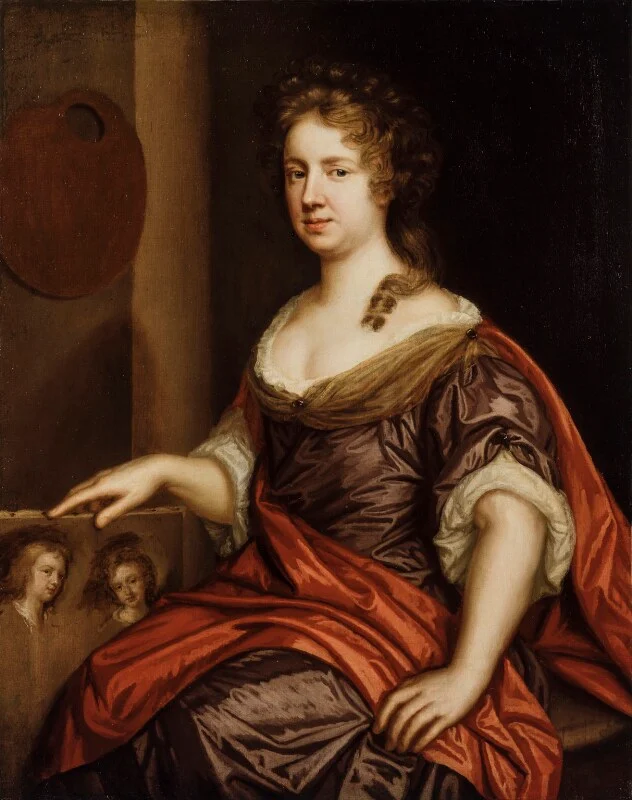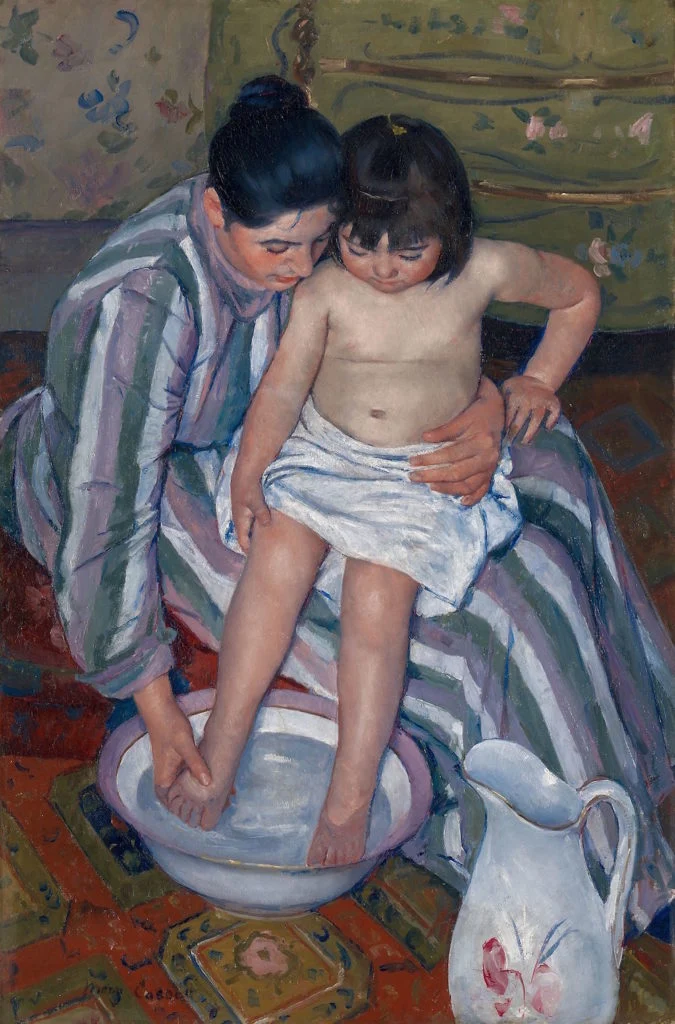Until 1974, an American bank could refuse to issue a credit card to a woman in her own name. And if they approved her, many required a man to cosign for it. Some major universities did not accept female undergraduate students until well into the 1970s, with Columbia holding out until 1981. And until 1978, it was perfectly legal in the United States to fire a woman from her job because she got pregnant. For some reason, motherhood is exalted, yet until scarily recently, it was enough to quash anyone’s aspirations for a career. This discrepancy was not lost on some. Even when women were expected to give up their jobs to focus on raising a family, there were women who pushed back. If motherhood is good enough to put in a painting, it makes sense to have mothers painting them.
In the past (and disappointingly still today, to an extent), some thought that a woman’s job would cause her to neglect her family. There was also the vice versa, that the obligations of motherhood would be detrimental to her career. However, if one looks closely, balancing a career and home life was normal for women in the arts going back to the seventeenth century. For example, the Italian painter Artemisia Gentileschi was married with children for much of her life as an artist. She had five children, with only one surviving to adulthood, her daughter Prudentia. Artemisia gave Prudentia an artistic training, leading to her becoming an artist herself. For others, like the British painter Mary Beale, motherhood and family life were not a detriment to her career but a benefit. From the 1650s to the 1690s, Beale achieved prominence as a London portraitist partly because her husband and children supported her artistic career very actively. Though Mary’s husband, Charles Beale, had a job in the civil service, he left this position to become her studio manager once her artistic pursuits proved sufficient to provide for the family. Both their children helped in her studio and later went on to study art at school.
Even among the bohemian modernists of the late nineteenth century, motherhood still had its place. The great women of Impressionism took great care to balance their family lives and their artistic careers, maintaining them both. Of the trois grandes dames of Impressionism, two did just that. Berthe Morisot married Edouard Manet’s younger brother Eugène. They had one daughter, Julie, who frequently served as a model for Morisot, her uncle Edouard, and other Impressionists. Meanwhile, Marie Bracquemond, whose husband Felix exhibited with the Impressionists in 1874, had a painting career while caring for her son Pierre. Pierre would later become the most prominent source of information about his parents through his short, unpublished double biography on the couple. There were, however, newer, modern conceptions of womanhood that some artists more readily embraced.
Focusing on one’s family had been the socially imposed standard for most women, a standard that some in the late nineteenth century rebelled against. Mary Cassatt, one of the trois grandes dames of Impressionism, represented the more modern woman coming into prominence at the turn of the twentieth century. She eschewed traditional feminine gender roles by focusing on her career rather than marrying and raising children. She was also very outspoken on issues concerning women’s rights, even exhibiting her work at suffragist events organized by the feminist activist Louisine Havemeyer.
Interestingly enough, while Cassatt had no children of her own, mothers with their children are probably her most prominent subjects. The mother and child is actually one of the most widespread subjects in Western art, mostly because of the popularity of the Madonna as a Christian icon. Many will point out, however, that it was not motherhood that Cassatt highlighted, it was womanhood. Despite being the epitome of a modern woman, Cassatt would not frequent the same spaces as her male counterparts. Going to the Moulin Rouge for a cabaret show was out of the question for her and other respectable women. The dancers and revelers that populated paintings by Manet and Toulouse-Lautrec had no place in Cassatt’s work. Rather, in capturing private moments at home, showing women reading books and newspapers, focusing on needlework, or tending to their children, she elevated simple domestic moments into great works of art. Even her more misogynistic colleagues like Edgar Degas admitted to this ability, calling her 1899 painting Mother & Child (The Oval Mirror) “the greatest painting of the nineteenth century”, comparing it to the great Madonna and Child works of the Renaissance.
Though Cassatt was not a mother herself, she teaches an important lesson about motherhood. Mothers are some of our first teachers and role models. They care for us and give us valuable lessons that remain with us for the rest of our lives. Even in calm, tranquil, domestic moments, Cassatt captures motherly strength and perseverance. These same qualities also helped every mother who made a career for herself as an artist, even in a time or place when such a career (or even a career at all) was socially discouraged.


